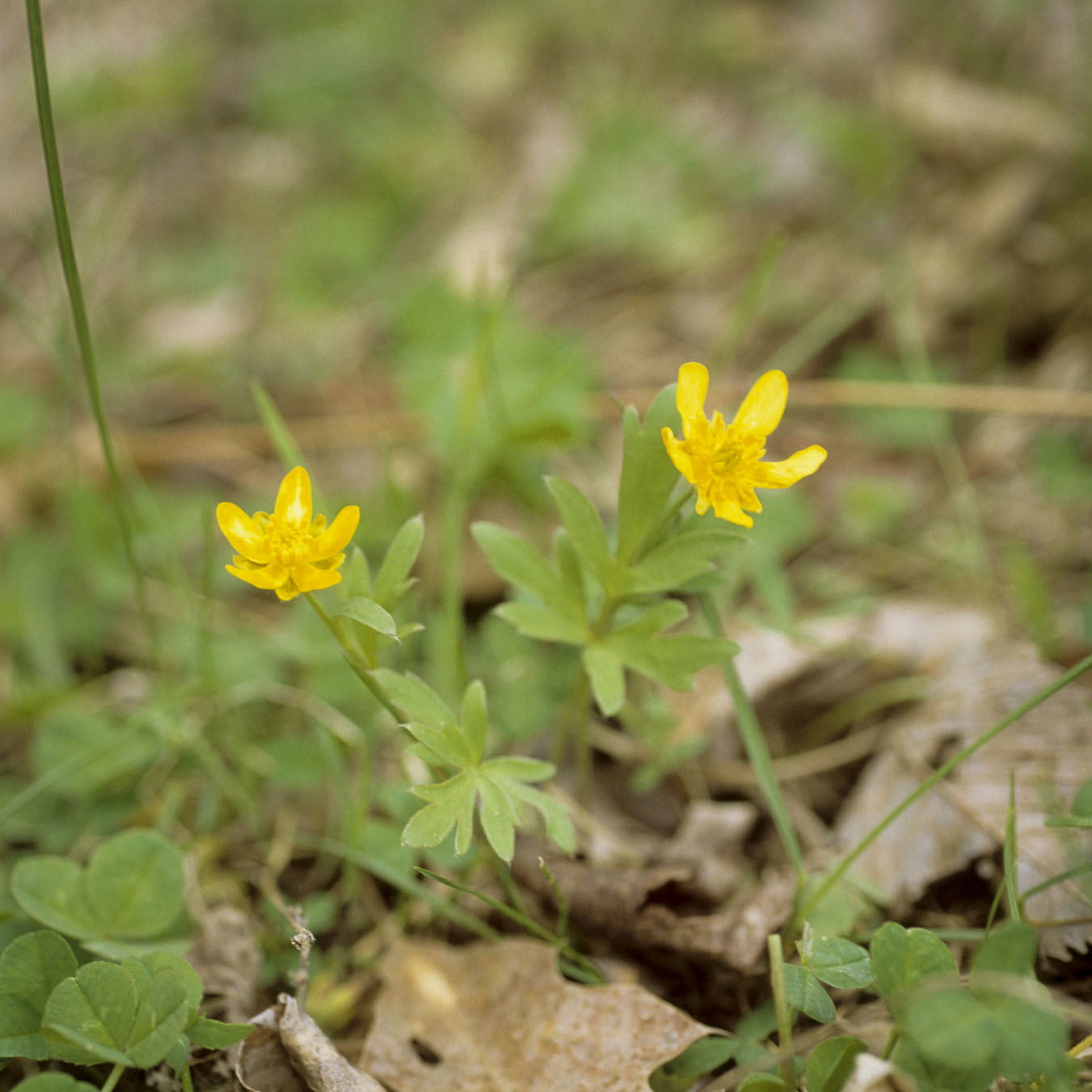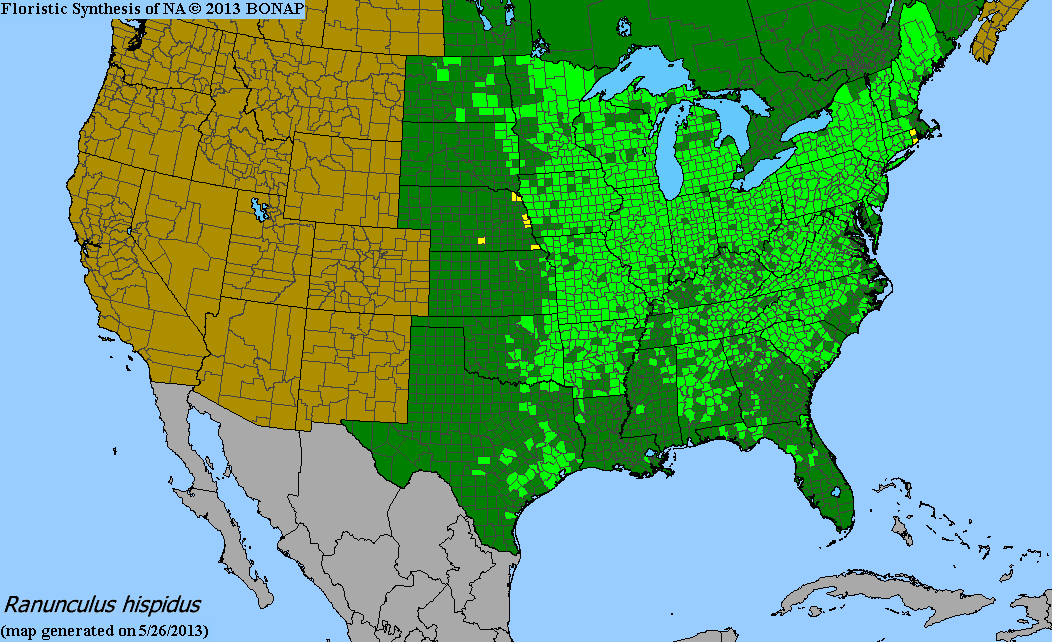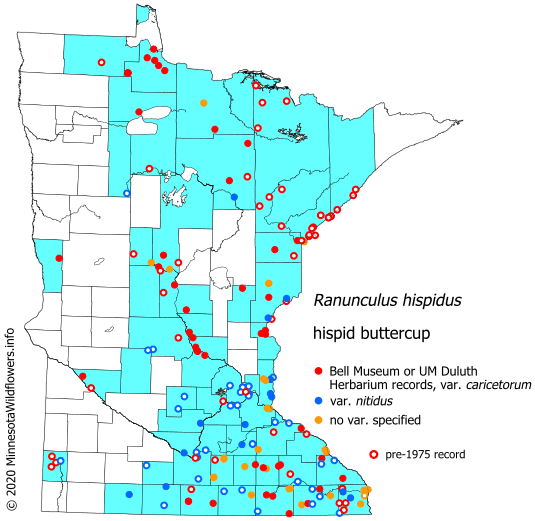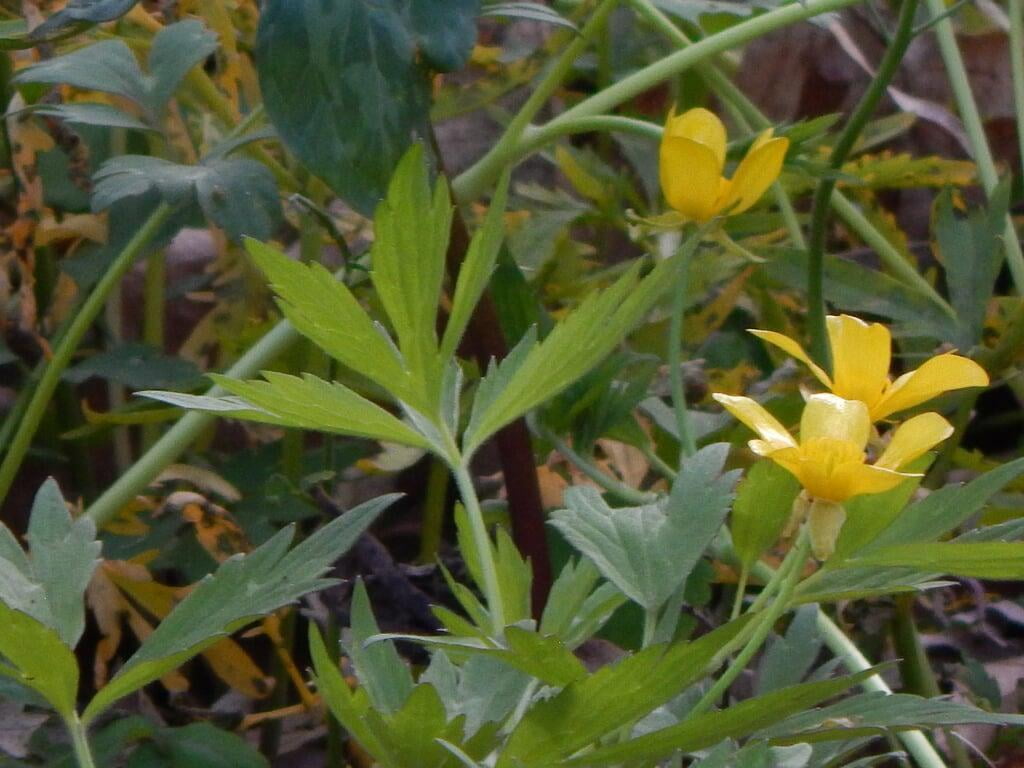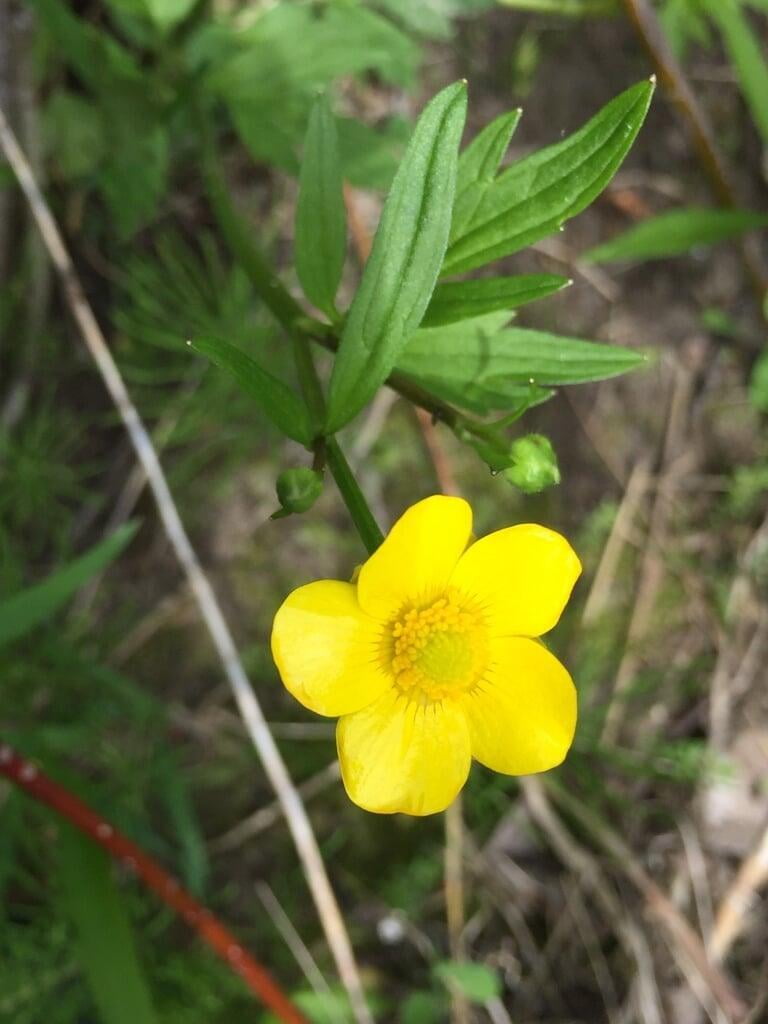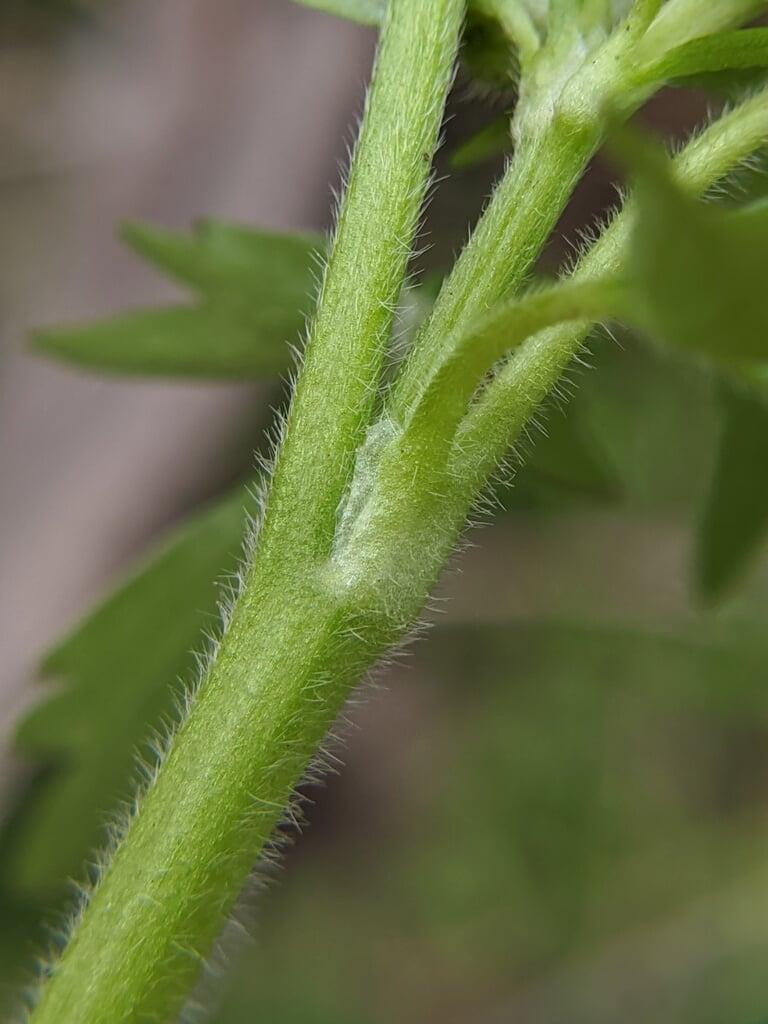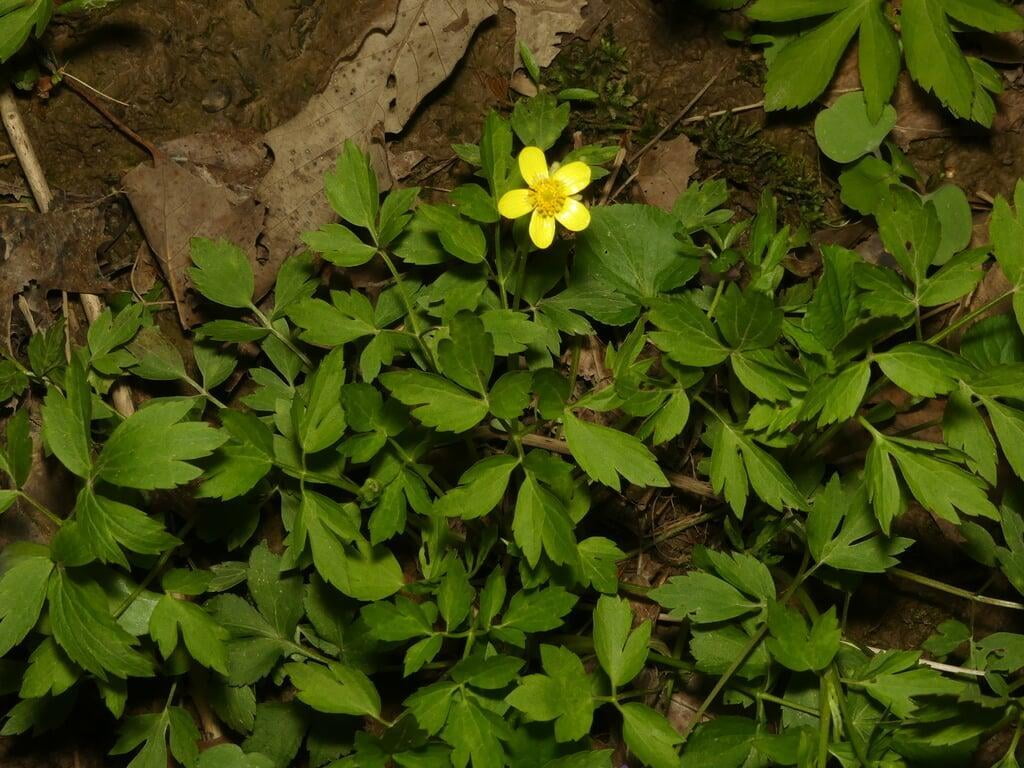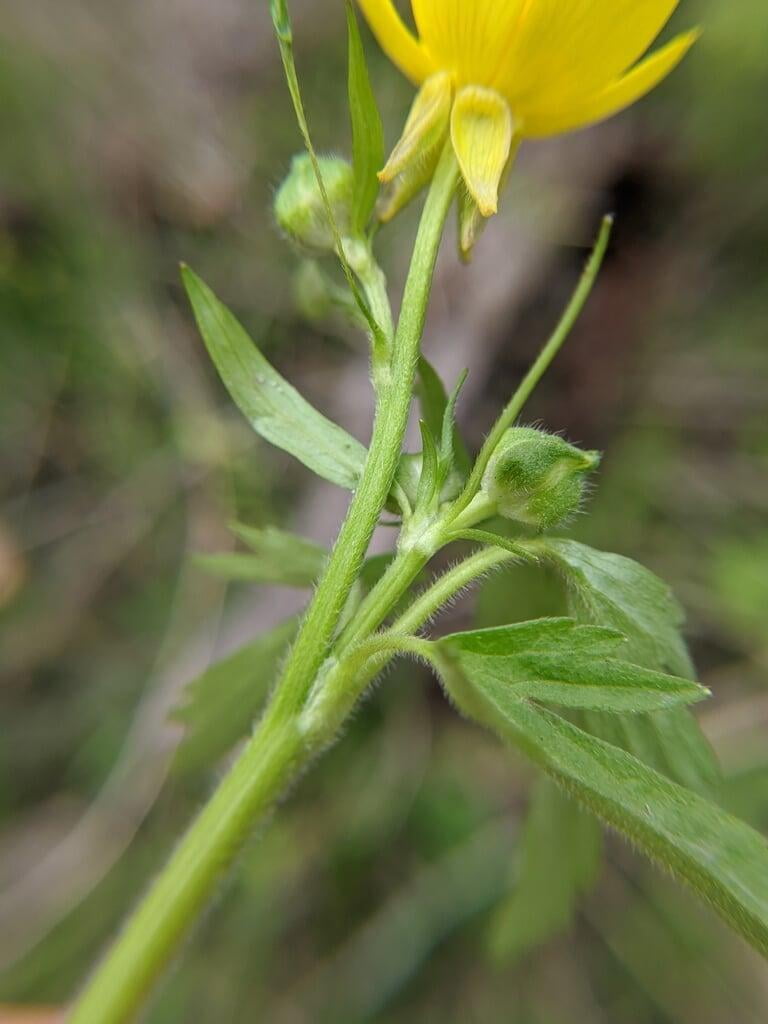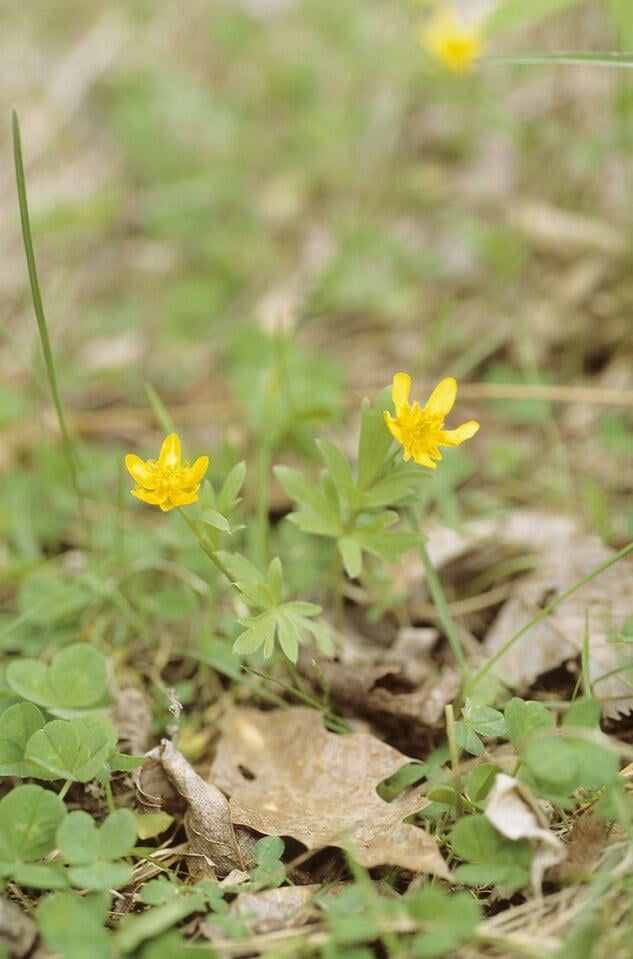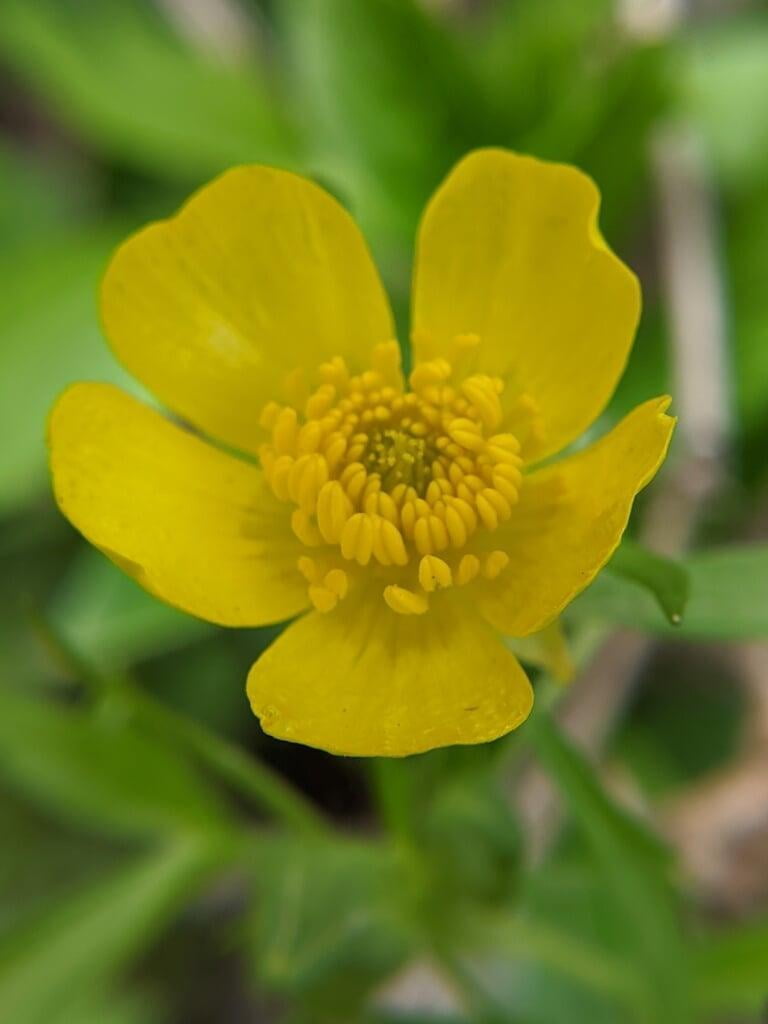Ranunculus hispidus
Swamp buttercup Description:
Ranunculus hispidus, commonly known as Swamp Buttercup, is a herbaceous perennial plant native to North America. It is commonly found growing in wetlands, marshes, and swamps, and is often seen blooming from spring to early summer. The plant produces small white or yellow flowers with hairy sepals and petals that are arranged in clusters at the top of the stems. The basal leaves of Ranunculus hispidus are palmate with three to seven lobes, while the stem leaves are deeply lobed and serrated. After pollination, the plant produces achenes that are dispersed by the wind or water.
In the wild, Ranunculus hispidus provides food for a variety of pollinators, including bees, flies, butterflies, and beetles. The flowers are especially attractive to bees, which collect nectar and pollen from the plant. Despite its attractive appearance, Ranunculus hispidus can be toxic to humans and animals if ingested. The plant contains a toxic compound called protoanemonin, which can cause skin irritation, digestive upset, and other symptoms. Despite its toxicity, Ranunculus hispidus is a valuable and important plant in wetland ecosystems, providing habitat and food for a variety of wildlife.
Native Range:
Swamp buttercup is found in the central and Eastern United States.
Standard Plant Information:
Plant Height: 6" - 18" inches
Bloom Time: April - June
Preferred Habitat: Does well in part shade. Often found in moist woods, seeps, and along streams.
Sowing:
For most homeowners, the best option is to scatter seed on the ground by hand broadcasting at a minimum of 16-64 pls ounces per acre. For even coverage, we recommend that you broadcast seed in perpendicular rows across the site to ensure even coverage.
You’ll want to broadcast any grass seed first, which will get raked into the soil lightly. Next, it is ideal to mulch the area lightly with either a clean (no seed) straw or preferably with our native Little Bluestem straw, sold at our retail garden centers. After a light mulching is complete, now it’s time to broadcast your native wildflower seeds, which should not be raked into the soil. A good rain or watering is sufficient to cover the seed.
Planting:
Simply dig a hole in the soil slightly larger than the plant’s roots. Ensure that the soil line of the plant is maintained during the transfer (i.e. the plant should be at the same level with the ground as it was in the pot). Pack any loose dirt back around the plant and make sure you water it well the same day to ensure it has the best chance of survival.

